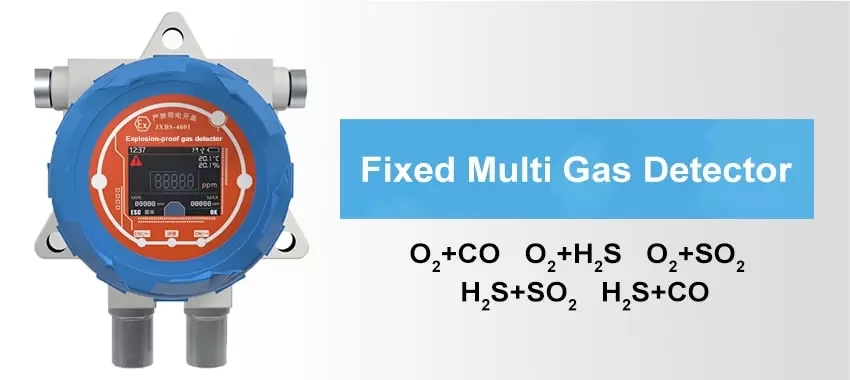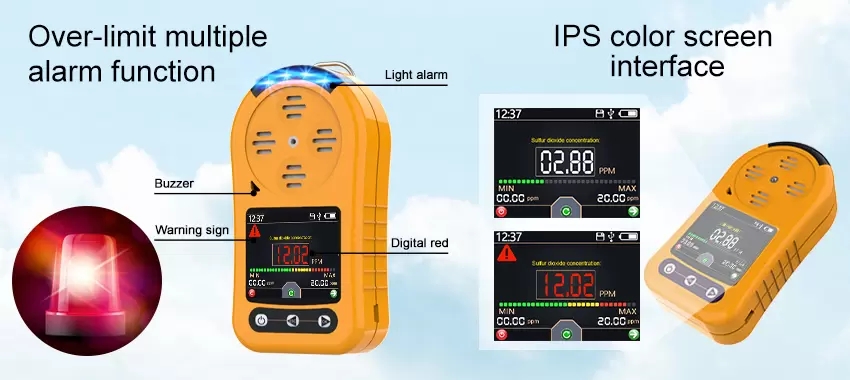Introduce
Hydrogen is a promising fuel alternative for buses, cars and other vehicles because it can be converted into electricity in fuel cells. It has been used in medical applications, space exploration and industrial applications, such as the production of food and industrial chemicals. However, safety is important when using hydrogen, as leakage of gas into the air from valves or tanks can lead to the formation of explosive mixtures that can be hazardous to equipment operators, drivers and the surrounding environment. The presence of hydrogen can be detected by a gas detector called a hydrogen sensor. Compared to other conventional gas detectors, hydrogen sensors are durable, compact, easy to maintain and cost less to use. Commercially available hydrogen sensors can detect hydrogen leaks and trigger alarms, turn off devices or turn off valves. However, current technologies have limitations in temperature range, operating speed and sensitivity to interference from other gases.

The current application
Some current hydrogen sensor applications include:
1.Petroleum refining
2.Stationary fuel cell unit
3.Medical diagnosis
4.Space Shuttle and space station systems
5.A nuclear reactor
6.The battery
7.Mine safety and ore reduction operations
8.Cooking oil hydrogenation
9.Ammonia and methanol production.
The future development
Conventional hydrogen sensors such as pressure sensors for specific ionized gases, mass spectrometers and gas chromatographs are limited by slow response, high cost and large size.
Therefore, a wide range of applications, including in-situ monitoring, require hydrogen sensors with lower power consumption, faster response, lower production costs and smaller sizes.
At present, various hydrogen sensors such as metal sensors, optical sensors, acoustic sensors, thermoelectric sensors, semiconductor sensors and electrochemical sensors have been sold in the market. Among them, the semiconductor sensor has long-term stability, excellent hydrogen sensing performance and fast response.
However, this type of sensor is still limited by high operating temperatures, resulting in potential safety hazards and high power consumption. In addition, another key problem that needs to be solved for semiconductor sensors to improve sensing accuracy is cross-selectivity for other reducing or combustible gases.
In recent years, semiconductor nanostructures including thin films and nanowires have been used as sensing materials to develop high-performance hydrogen sensors.
These nanostructures have good electron transport performance and high specific surface area. On the other hand, compared with thin films, one-dimensional nanostructures have a wider detection limit, lower operating temperature, higher sensitivity and higher response time. In addition, semiconducting nanostructures decorated with nanoparticles have been extensively studied to improve their selectivity and sensitivity to hydrogen.

Portable 4 in 1 Gas Detector CO LEL O2 H2S Gas Analyzer
Our portable multi gas detector with a large LCD. It can monitor CO, H2S, O2 and combustible gas simultaneously. The instrument with audio/visual and vibratory indicators, rechargeable battery, and simple use. It is widely used in the area where explosion-proof is required or toxic gas leaks, like underground channels or mining industry, so as to protect the workers’ life and avoid damage on the relevant equipments.
Fixed miniature hydrogen sulfide sensor
The stationary miniature hydrogen sulfide sensor (H2S sensor) has high sensitivity to H2S. The H2S sensor can detect 5ppm of H2S gas. Ideal for H2S gas leak detection.Support RS485/4-20mA/0-5V/0-10V/NB-IoT/LoRa/WIFI/Ethernet and other signal outputs to meet the needs of different environments. Wireless transmission, no wiring. Low power consumption and stable performance.Can be used with cloud platform: With Jingxun cloud, you can configure the configuration interface according to the on-site situation, and check the data and alarm at any time.